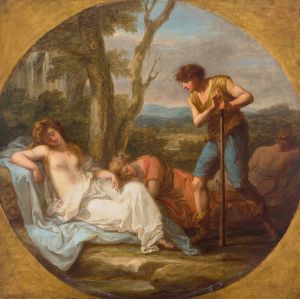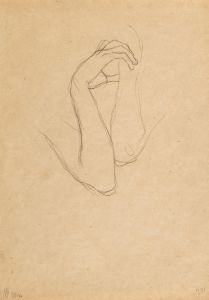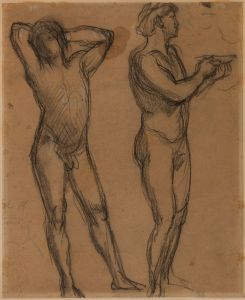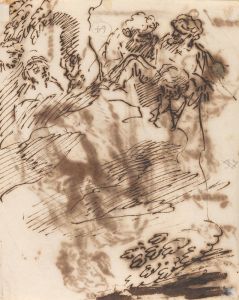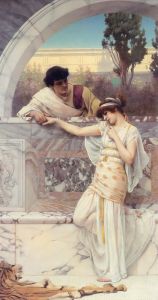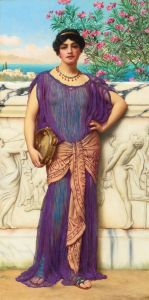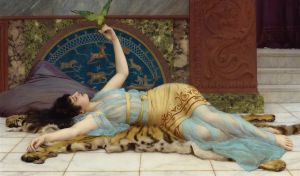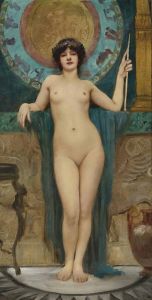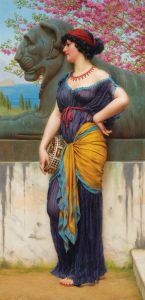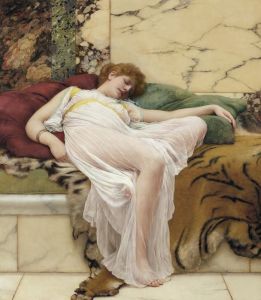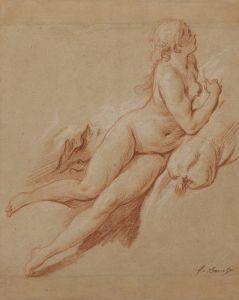
Atalanta
A hand-painted replica of John William Godward’s masterpiece Atalanta, meticulously crafted by professional artists to capture the true essence of the original. Each piece is created with museum-quality canvas and rare mineral pigments, carefully painted by experienced artists with delicate brushstrokes and rich, layered colors to perfectly recreate the texture of the original artwork. Unlike machine-printed reproductions, this hand-painted version brings the painting to life, infused with the artist’s emotions and skill in every stroke. Whether for personal collection or home decoration, it instantly elevates the artistic atmosphere of any space.
John William Godward's painting "Atalanta" is a notable example of the artist's work, reflecting his characteristic style and thematic interests. Godward, a British painter associated with the Neoclassical movement, was active during the late 19th and early 20th centuries. His works are known for their meticulous attention to detail, classical themes, and the portrayal of idealized beauty, often featuring women in classical settings.
"Atalanta" is one of Godward's many paintings that draw inspiration from ancient mythology and classical antiquity. Atalanta, in Greek mythology, was a renowned huntress and a swift runner, known for her role in the Calydonian Boar hunt and her unique approach to marriage, where she challenged her suitors to a footrace, marrying only the one who could outrun her. This mythological background provides a rich context for Godward's depiction, although the painting itself focuses more on aesthetic beauty than narrative storytelling.
In "Atalanta," Godward employs his signature style, characterized by the use of vibrant colors, precise lines, and a serene composition. The painting typically features a female figure, likely representing Atalanta, adorned in classical attire. Godward's attention to detail is evident in the rendering of textures, such as the softness of the fabrics and the smoothness of the skin, which are hallmarks of his work. The background often includes elements of classical architecture or nature, enhancing the timeless and idealized atmosphere of the scene.
Godward's work, including "Atalanta," is often compared to that of his contemporaries, such as Sir Lawrence Alma-Tadema and Frederic Leighton, who also explored classical themes. However, Godward's paintings are distinguished by their intimate scale and focus on solitary figures, often set against minimalistic yet evocative backgrounds. This approach allows viewers to appreciate the beauty and tranquility of the scene without the distraction of complex narratives or multiple characters.
The painting "Atalanta" exemplifies Godward's fascination with the classical world and his dedication to capturing the elegance and grace of his subjects. His work reflects the broader Victorian interest in antiquity, which was fueled by archaeological discoveries and a romanticized view of the ancient past. Despite the decline in popularity of classical themes in the early 20th century, Godward remained committed to his artistic vision until his death in 1922.
Today, Godward's paintings, including "Atalanta," are appreciated for their technical skill and aesthetic appeal. They offer a glimpse into a bygone era of art that celebrated beauty, harmony, and the enduring allure of classical mythology. While Godward's work was somewhat overlooked in the decades following his death, there has been a resurgence of interest in his paintings, leading to their inclusion in various art collections and exhibitions worldwide.






